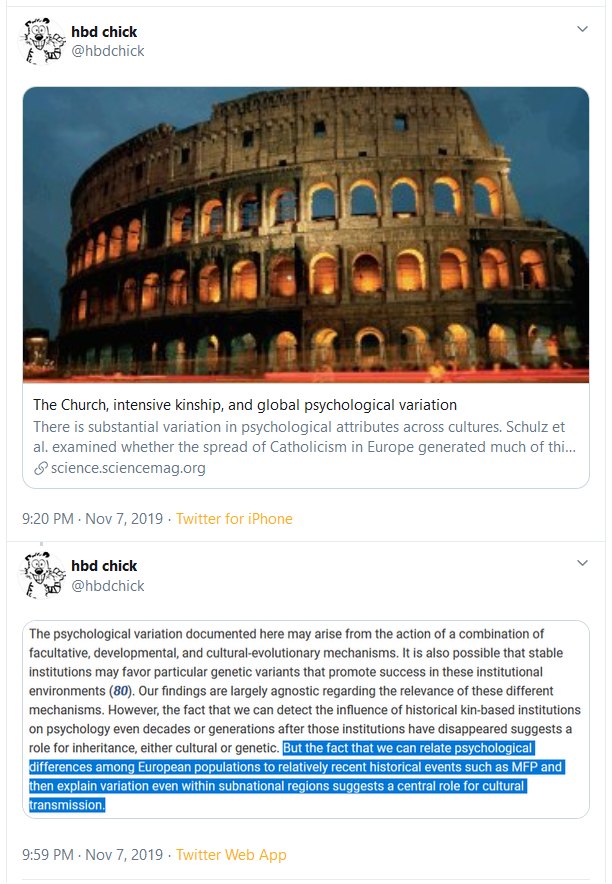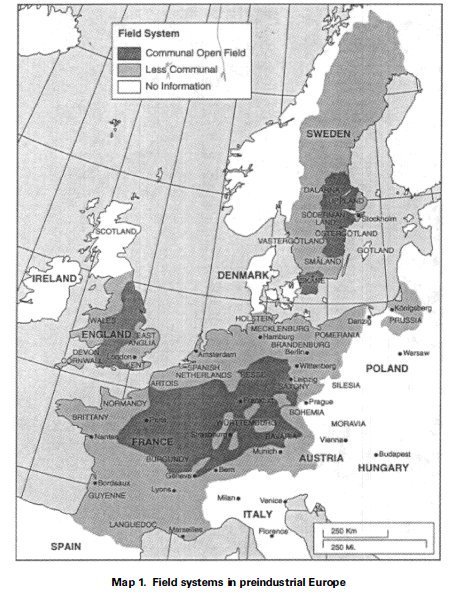schulz et al. have done a lot of fabulous work here ( https://science.sciencemag.org/content/366/6466/eaau5141),">https://science.sciencemag.org/content/3... but they& #39;re still missing out on two critical points:
1) evolution can be recent, rapid, and local;
2) how viscous populations are *overall* likely affects the genetical evolution of social behavior.
1) evolution can be recent, rapid, and local;
2) how viscous populations are *overall* likely affects the genetical evolution of social behavior.
wrt that second point, cousin marriage (or no) clearly affects the viscosity of a population (i.e. how far individuals move away from their place of birth/families, which affects how much kin interact and, therefore, how much kin selection can take place), however...
...other factors, other societal structures, can shape population viscosity: family size, for instance (which they do address), as well as fundamental socio-economic structures.
so, for instance, a key feature of manorialized nw medieval europe was the *communal field system*...
so, for instance, a key feature of manorialized nw medieval europe was the *communal field system*...
...centuries of *non-kin* working together to manage their agricultural activities. this happened only in certain regions of nw europe. here is an incomplete map (denmark should be included, for one):
...peripheral regions of europe - large parts of eastern europe, for instance - never had communal field systems based on non-kin, or they experienced them much later. see here: https://twitter.com/hbdchick/status/1022763585875980288">https://twitter.com/hbdchick/...
so, i think they& #39;re missing the bigger picture:
1) it could very well be genetic evolution (i would bet on it); and 2) there& #39;s more to population viscosity than just marriage patterns and family types (yeah, that& #39;s coming from me!).
remember: YOU HEARD IT HERE FIRST! (~_^)
1) it could very well be genetic evolution (i would bet on it); and 2) there& #39;s more to population viscosity than just marriage patterns and family types (yeah, that& #39;s coming from me!).
remember: YOU HEARD IT HERE FIRST! (~_^)
The Genetical Evolution of Social Behaviour. I - W. D. HAMILTON
https://www.uvm.edu/pdodds/files/papers/others/1964/hamilton1964a.pdf">https://www.uvm.edu/pdodds/fi...
https://www.uvm.edu/pdodds/files/papers/others/1964/hamilton1964a.pdf">https://www.uvm.edu/pdodds/fi...
https://twitter.com/hbdchick/status/978991629485789184">https://twitter.com/hbdchick/...

 Read on Twitter
Read on Twitter



